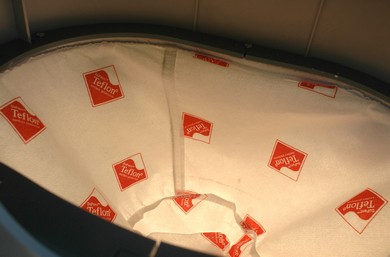 Good marriages change people, and some of my own post-nuptial re calibration involved vacuum cleaners. My wife was raised in a central vacuum household. I came from a strictly hand-push, upright-vac tradition. “Central vacs are overkill”’ I used to preach. “Nobody needs to get that fancy.”
Good marriages change people, and some of my own post-nuptial re calibration involved vacuum cleaners. My wife was raised in a central vacuum household. I came from a strictly hand-push, upright-vac tradition. “Central vacs are overkill”’ I used to preach. “Nobody needs to get that fancy.”
But being the sensitive and caring new husband that I was, I installed central vac pipes when building our house as a newlywed back in the late 1980s. (“No need to actually hook the pipes up to a vacuum”, I schemed. “Maybe my parents will let us have that howling old Kirby they bought in 1972.”)
But fast-forward 18 years, and I’m a happy convert. I plug in our central vac hose every Saturday morning as I clean our wood pellet stove. Any push-type vacuum would simply be an unbearable hardship. Perhaps I’m getting soft, but central vacs are great. And as I’ve learned, they’re also getting better in three specific ways.
Central vacs are now less noisy, more powerful and healthier for you.
I know because I’ve just installed a second central vac unit, this time in my workshop. My research directed me towards design features that address all the old reasons I used to frown on central vacs, plus a few I hadn’t even thought of.
Healthier Central Vaccums due to Better Filtration
 Perhaps the biggest drawback with central vacs of old has been the filtration system that separates dirt and dust from the air that sucks it up. The best units have always used a swirling cyclone action to complete this separation. The air stream spins around inside the vac, allowing particles to drop downwards into a pile before air is exhausted out of the machine.
Perhaps the biggest drawback with central vacs of old has been the filtration system that separates dirt and dust from the air that sucks it up. The best units have always used a swirling cyclone action to complete this separation. The air stream spins around inside the vac, allowing particles to drop downwards into a pile before air is exhausted out of the machine.
Cyclonic separation is great as far as it goes, but the results are never perfect. As you’d guess, ultra-fine airborne particles don’t always settle out fully as they swirl. They’re often broadcast out the exhaust port of old-style central vacs, especially if you’re cleaning up fine dust. Particles as small as 1/60 the diameter of a human hair are known to cause respiratory disease. They can also remain floating around for hours after the vacuum has been shut off. Nobody knew about all this until the late 1990s, so it’s understandable that vac technology had some catching up to do.
All this is why top central vacs take the whole issue of secondary filtration very seriously.
 Look for units that include HEPA filtration in addition to cyclonic separation.
Look for units that include HEPA filtration in addition to cyclonic separation.- HEPA stands for “high-efficiency, particle-arresting”, and it means that nothing harmful comes out the exhaust port of the vac.
- The best vacuum filters also include chemical treatments to inhibit microbe growth on the filter membrane.
- Also, look for dirt-level indicator lights. These tell you at a glance whether or not it’s time to empty dirt out of the vac canister.
Today’s Central Vacuums Offer Superior Suction and Quieter Performance
Central vacs have always delivered superior suction. No one argues with that. But they typically do it in exchange for a whole lot of noise. One of the best things about today’s models is quieter performance.
- Thick plastic housings dampen sound in a way that older vacs can’t match.
- Add a muffler to the installation, and there’s no reason that the noise of a central vac needs to bother anyone, even if you’re standing right next to the power unit while it’s running out in the garage or basement.
- I knew I wanted a powerful central vac for my workshop, but I wasn’t prepared for what I found. The highest capacity models these days operate on 240 volts. And while this requires special wiring (ordinary household circuits deliver 120 volts), the results may be worth it if your central vac network has lots of long pipes, or you just like massive amounts of suction power.
So there. I’ve recalibrated my ideas about central vacs. And isn’t it right and reasonable that for all my efforts and sensitivity I get to have the newest vac equipment out in my workshop.